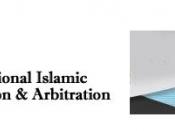Every employer would like to avoid workplace disputes. However, this is not always possible and litigation is an option. The most common option for commercial disputes is called alternative dispute resolution (ADR), which is primarily an alternative method other than litigation, used to settle legal disputes and employment conflict situations. ADR processes, when properly used, provide due process and an opportunity to be heard in a less formal and therefore less intimidating setting than the courtroom. And the cost is generally less expensive than going through litigation. The two common ADR processes, arbitration and mediation, are often confused by the general public. However, they are very different. Arbitration is a form of ADR in which a qualified third party decides the outcome of the case after attorneys of both parties present evidence. Mediation, by contrast, does not include a third party decision maker. Rather, a neutral mediator facilitates and guides negotiations among the parties to allow them to reach a voluntary settlement (Erickson, 2006).
In this simulation, I was faced with a delicate situation: a valued employee is involved in the disclosure of confidential business information to a competitor. In this paper I will analyze the situation that transpired in the "Resolving Employment Disputes" simulation and offer recommendations regarding what the organization can best do to address such situations in the future.
The key legal decisions that were made in this simulation were to first hold a neutral investigation of the intellectual property theft. After reviewing the three options of progressive discipline, neutral investigation and business confidentiality breach, under the circumstances, conducting a neutral investigation was good decision. Loss of confidential information to a competitor is a serious threat to any research-intensive business. However, in such a case, the burden of proof lies with the employer. And before...


